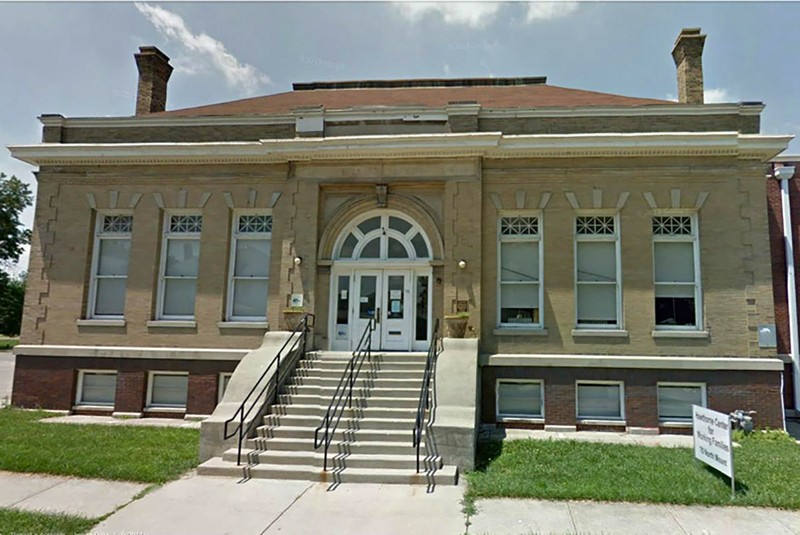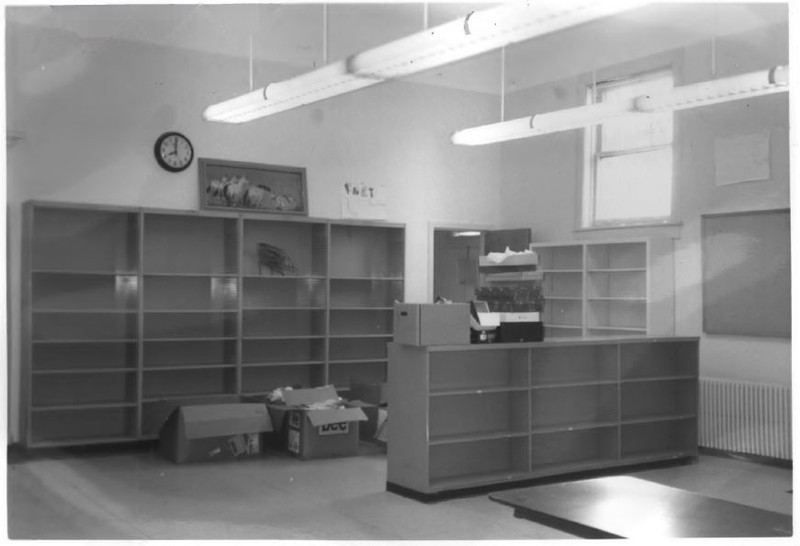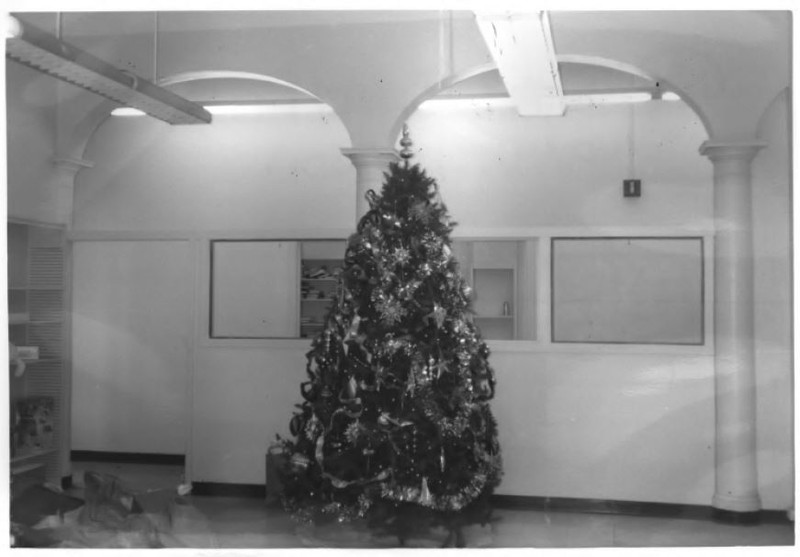Hawthorne Branch Library No. 2
Introduction
Text-to-speech Audio
Images
Hawthorne Branch Library No. 2, now home to the Hawthorne Community Center (image from Historic Indianapolis)

Vacant library building (image from the National Register of Historic Places)

The Hawthorne Branch, empty yet decorated for Christmas (image from the National Register of Historic Places)

Backstory and Context
Text-to-speech Audio
The Carnegie funded Hawthorne Branch Library was designed by the architectural firm of D. A. Bohlen and Son and constructed from 1909-1911. The Neoclassical library, now home to the Hawthorne Community Center, is the oldest surviving branch library building in Indianapolis and is listed on the National Register of Historic Places [1; 2].
History of the Hawthorne Branch
A free public Library was established in Indianapolis in 1869, which was managed by the city's school board and received its own building in 1893. The previous year, Miss Eliza Browning had become the first female head librarian of the Indianapolis system. Browning spearheaded efforts to establish five branch libraries which operated out of rented storefronts beginning in 1896. As more and more neighborhoods requested their own branch libraries, Browning applied to the Carnegie Foundation for funding to build six permanent branch locations. She was turned down because the request had not come through the mayor's office, and approached the city newspapers, which were quick to demand the support of Mayor Charles Bookwalter. In January of 1909, funding for five branches was granted to the library system. The Hawthorn and East Washington Branches were built simultaneously, with Hawthorne finished just days after East Washington on November 18, 1911. Designed by Oscar Bohlen and his father, German immigrant D. A. Bohlen, the Hawthorne Branch is a City Beautiful movement Neoclassical style building with an octagonal central core. Since the library system was controlled by the school board, the Hawthorne Branch and Nathaniel Hawthorne School (1904) were paired, and stand back to back [2].
The neighborhood served by the Hawthorne Branch Library experienced
an industrial boom with the completion of the Belt Railroad in the 1870s,
particularly due to the proximity of both the White River and the railroad.
Industries such as Haugh Iron Works, Parry Carriage Factory, Duesenberg Auto
Factory, and the Big Four Railroad roundhouse required skilled labor, and for
cost-cutting hired Eastern European immigrants from the surrounding
neighborhoods. The Hawthorne Branch served not only as a library, but a form of
community center, hosting church gatherings, PTA meetings for the school,
basketball games and girls' gymnastics, and plays in its basement until the
Community House was built in 1924. In September of 1955, the library was closed
and remodeled as an annex to the school next door. Until the 1980s, it served
as an office and meeting space for the public school system. Though the
interior was extensively remodeled, the building still retains its original
doors, hardware, and exterior [2]. The building's present resident is the
Hawthorne Community Center (originally called the West Park Social Service
Association), which was originally formed in 1923 and acquired land formerly known
as Flack's Pasture to build the Community House. The organization's first building
was dedicated on March 2, 1924, with programming overseen by Reverend Clarence
Baker. After suffering two fires (in 1966 and 1975), the organization took
temporary shelter until another building was completed in 1979. Mergers between
multiple service organizations in the 1990s led to the Hawthorne Branch Library
building's second major renovation in 2000, when it was converted into a
community center. The Hawthorne Community Center offers a variety of services
for all ages, including childcare, preschool, and day camps; neighborhood
meetings, recreational and social gatherings, and volunteer opportunities;
English as a Second Language, literacy, GED, and financial classes; public
benefits and employment assistance; a food pantry, mental health services, and
veterinarian services; and senior citizens programs including field trips,
games, and home cooked meals [1].
